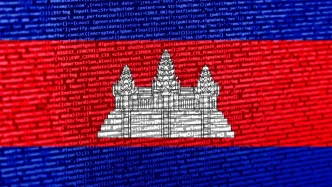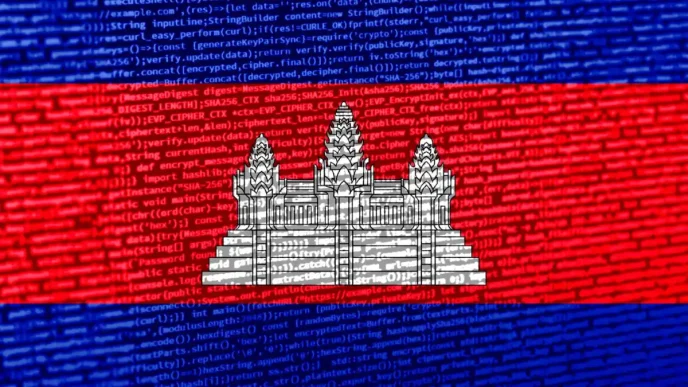Hà Nội, Vietnam’s bustling capital, is embarking on an ambitious urban redevelopment project that promises to reshape the historic area around Hoàn Kiếm Lake, a cherished symbol of the city’s cultural and historical identity. The plan, deliberated during a recent meeting of the Hà Nội People’s Committee, involves relocating numerous households and government offices to make way for a sprawling square-park in the eastern part of the lake area. This development, coupled with plans for underground infrastructure and the renovation of nearby Đông Kinh Nghĩa Thục Square, signals a significant transformation aimed at enhancing the city’s appeal as a global tourist destination while preserving its rich heritage.
The project, spearheaded by Vice Chairman Dương Đức Tuấn, seeks to reimagine the eastern flank of Hoàn Kiếm Lake as a “special square-park,” a multifunctional public space that balances modernity with cultural reverence. Beyond aesthetics, the initiative includes plans for underground spaces linked to Metro Line 2’s C9 Station, as well as comprehensive compensation and resettlement schemes for affected residents. However, as the city pushes forward with this grand vision, questions linger about the impact on local communities, the preservation of historical structures, and the balance between development and heritage.
A New Heart for Hà Nội
Hoàn Kiếm Lake, located in the heart of Hà Nội’s Hoan Kiem District, is more than just a scenic spot; it is a cultural touchstone tied to Vietnamese folklore and national identity. The lake and its surroundings, including the iconic Turtle Tower and nearby colonial-era buildings, attract millions of tourists annually. The proposed square-park aims to amplify this allure by creating an open, pedestrian-friendly area that could serve as a venue for cultural events, public gatherings, and tourism activities.
According to Vice Chairman Tuấn, the city has tasked the Department of Finance with forming a dedicated task force to oversee the planning and renovation process. A detailed report is being prepared for the Hà Nội Party Committee to secure approval for the investment policy. Simultaneously, the Department of Agriculture and Environment is compiling topographic maps and cadastral data to aid in land inventory and compensation planning. These steps underscore the city’s intent to execute the project with precision, though the scale of relocations involved raises concerns about implementation.
The redevelopment extends beyond the eastern lake area. Plans to renovate Đông Kinh Nghĩa Thục Square, a nearby historic site, include demolishing the commercial centre known locally as the “Shark Jaw” building to create another square with underground levels. This parallel initiative suggests a broader vision to transform central Hà Nội into a cohesive network of public spaces, potentially redefining the city’s urban landscape.
Balancing Progress with Preservation
A key pillar of the project is the commitment to preserving Hà Nội’s architectural and historical legacy. The eastern area of Hoàn Kiếm Lake is home to several French colonial buildings, such as the Department of Culture and Sports and the Institute of Literature, as well as significant historical sites like the revolutionary relic associated with President Hồ Chí Minh’s visit to Nhà Đèn (the power station). Vice Chairman Tuấn has emphasised the need for a thorough architectural study to identify structures worthy of preservation and to propose methods that harmonise their historical value with the new landscape.
This focus on cultural sensitivity is crucial in a city where history and modernity often collide. Hà Nội’s urban fabric is a tapestry of ancient temples, colonial architecture, and post-war developments, making any large-scale project a delicate balancing act. While the city’s leadership appears committed to safeguarding heritage, the practical challenges of integrating preserved structures into a modern square-park remain unclear. For instance, how will construction activities, especially for underground spaces, avoid damaging these historical assets? The government has directed relevant units to devise technical solutions to protect such structures, but specifics are yet to emerge.
Underground Ambitions and Metro Integration
One of the most forward-thinking aspects of the plan is the development of underground spaces in the eastern lake area, envisioned to include up to three basement levels. These spaces are intended to connect with C9 Station on Metro Line 2 (Nam Thăng Long – Trần Hưng Đạo), a critical component of Hà Nội’s expanding public transport network. The underground areas are slated for multifunctional use, encompassing public services, cultural activities, commercial ventures, and infrastructure needs.
This integration with the metro system could position the Hoàn Kiếm Lake area as a pivotal transit hub, easing congestion in central Hà Nội and enhancing accessibility for both residents and tourists. However, the construction of such extensive underground facilities in a densely populated, historically sensitive area poses significant engineering and logistical challenges. If successful, this could set a precedent for other Vietnamese cities grappling with urban density and transport demands. Yet, if mishandled, it risks disrupting the area’s character and alienating local communities.
Displacement and Compensation: A Human Cost
The redevelopment necessitates the relocation of numerous households and several government offices, including the Department of Culture and Sports, the Hà Nội Population Department, and the Hà Nội Blind Association. To address this, the city is exploring new office locations for these entities, with potential sites identified in areas like Cầu Giấy New Urban Area for state-owned corporations such as the National Power Transmission Corporation.
For affected residents, the city has promised compensation in the form of resettlement land in Đông Anh District, a suburban area north of central Hà Nội. The Đông Anh District People’s Committee has been directed to allocate approximately 100 hectares for this purpose. Additionally, temporary housing arrangements and options to purchase resettlement apartments are being considered for those ineligible for land compensation. Vice Chairman Tuấn has instructed the Department of Agriculture and Environment to apply the highest possible compensation policies to ensure fairness.
While these measures aim to mitigate the impact of displacement, they are not without controversy. Relocating to Đông Anh, though still within Hà Nội’s administrative boundaries, means moving away from the cultural and economic vibrancy of the city centre. For many families, this could disrupt livelihoods, social networks, and access to services. The success of the compensation and resettlement process will likely hinge on transparent communication and the adequacy of support provided during the transition. If mishandled, it could spark public discontent, a risk the city must navigate carefully in a country where land disputes have historically been contentious.
A Vision for the Future or a Risky Gamble?
Hà Nội’s plan to transform the Hoàn Kiếm Lake area reflects a broader trend across Vietnam, where rapid urbanisation is reshaping cities at an unprecedented pace. The government’s vision of a modern, culturally rich capital aligns with national goals to position Vietnam as a competitive player on the global stage. A revitalised Hoàn Kiếm Lake area could boost tourism, attract investment, and improve quality of life through better public spaces and transport links.
However, the project’s scale and complexity introduce significant risks. The integration of underground infrastructure, while innovative, must contend with technical hurdles and high costs. Preservation efforts, though well-intentioned, may struggle to keep pace with construction timelines. Most critically, the human dimension—ensuring fair treatment of displaced residents and maintaining community trust—remains a potential flashpoint. If the city can address these challenges, the square-park could become a defining feature of 21st-century Hà Nội. If not, it risks being seen as a top-down imposition that prioritises image over people.
Broader Implications for Urban Vietnam
The Hoàn Kiếm Lake redevelopment is emblematic of Vietnam’s urban ambitions, mirroring similar projects in Ho Chi Minh City and Đà Nẵng, where public spaces and infrastructure are being upgraded to meet modern demands. Yet, it also highlights the tensions inherent in such transformations. Vietnam’s cities are growing rapidly, with Hà Nội’s population exceeding 8 million and projected to rise further. Balancing this growth with cultural preservation and social equity is a challenge that extends beyond the capital.
For now, the project remains in its planning stages, with architectural studies, land surveys, and policy approvals still underway. The coming months will be crucial in determining whether Hà Nội can turn its bold vision into reality without sacrificing the very heritage it seeks to celebrate. As the city moves forward, the eyes of residents, historians, and urban planners alike will be on Hoàn Kiếm Lake—not just as a site of beauty, but as a test of Vietnam’s ability to harmonise its past with its future.














